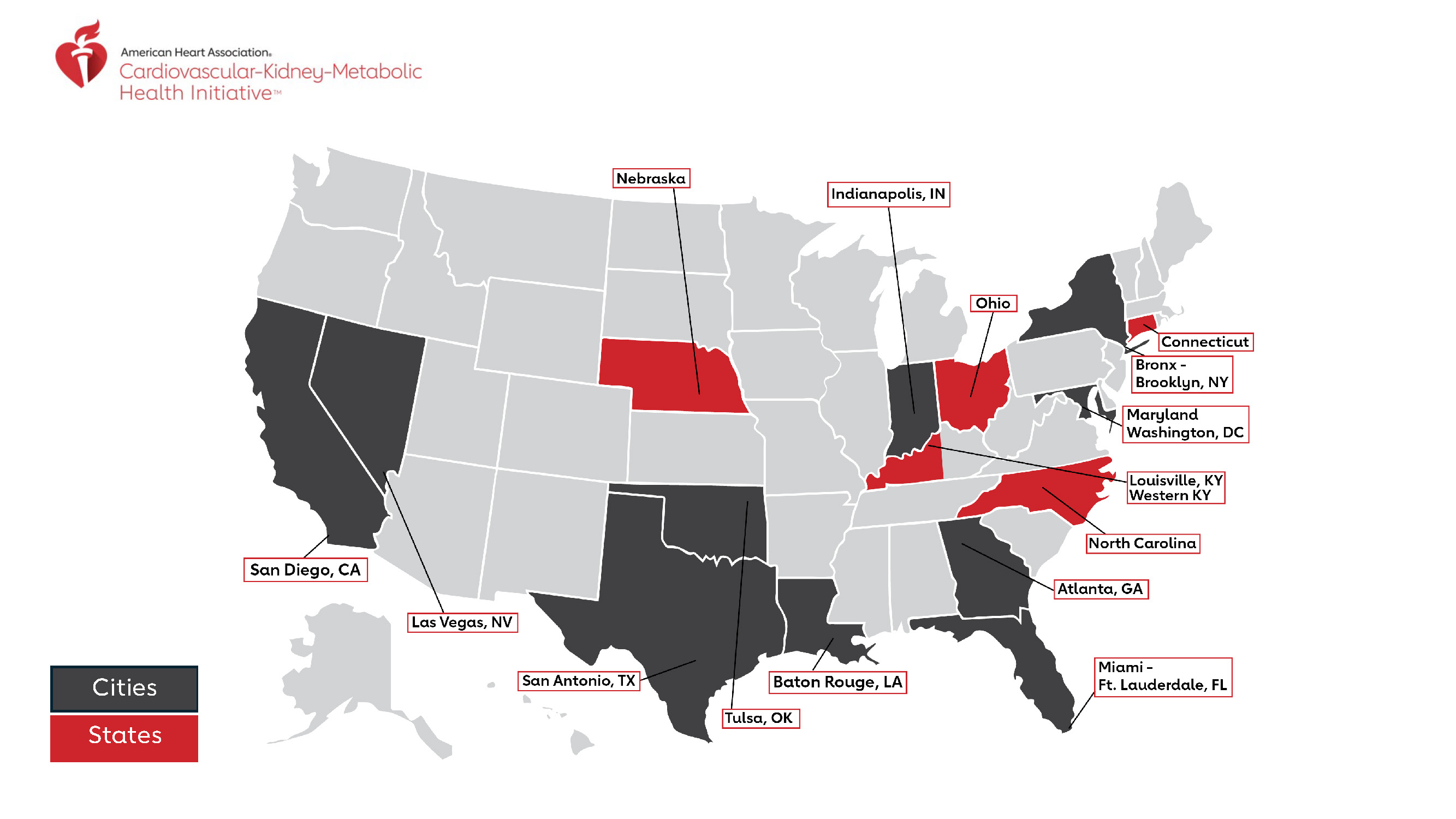FAQ on the American Heart Association's Cardiovascular-Kidney-Metabolic Health Initiative

Summary
The American Heart Association has expanded its Cardiovascular-Kidney-Metabolic Health Initiative to 15 U.S. regions, aiming to improve treatment for interconnected conditions leading to heart disease and stroke, impacting over a quarter-million patients.
What is the Cardiovascular-Kidney-Metabolic Health Initiative?
It’s an initiative by the American Heart Association designed to improve treatment for the interconnected conditions that lead to heart disease and stroke, focusing on cardiovascular-kidney-metabolic (CKM) syndrome.
Why is this initiative important?
Due to rising rates of risk factors and low levels of CKM health among U.S. adults, this initiative addresses a public health emergency by improving awareness, screening, and treatment for CKM syndrome.
How does the initiative work?
The initiative enrolls 150 healthcare sites across 15 regions to collaborate among specialists and health care professionals, streamlining care and connecting with community resources to provide evidence-based therapies.
Who is involved in this initiative?
The initiative is supported by founding sponsors Novo Nordisk and Boehringer Ingelheim, supporting sponsor Novartis Pharmaceuticals Corporation, and champion sponsor DaVita, alongside the American Heart Association.
When did the initiative start and expand?
The initiative began with five regions in February 2025 and has now expanded to include 10 more regions, totaling 15 regions by July 28, 2025.
Where is this initiative happening?
The initiative is being implemented in 15 regions across the U.S., including cities and metro areas like Atlanta, Baton Rouge, San Diego, Washington, D.C., Maryland, Ohio, and others recently added.
What are the risk factors for CKM syndrome?
Risk factors include high blood pressure, abnormal cholesterol, high blood glucose, impaired kidney function, and high body mass index or waist circumference.
How were the regions selected for the initiative?
Regions were selected based on disease prevalence, local health system characteristics, and community features like population size and demographic mix.
What is the goal of the initiative?
The goal is to establish a model of care that ensures evidence-based therapies are consistently provided to those with CKM conditions, improving CKM health nationwide.
How can healthcare organizations get involved?
Healthcare organizations can join the initiative and be recognized as ‘CKM Health Groundbreakers’ by participating in the program to increase awareness, screening, and treatment for CKM syndrome.

This story is based on an article that was registered on the blockchain. The original source content used for this article is located at NewMediaWire
Article Control ID: 121658